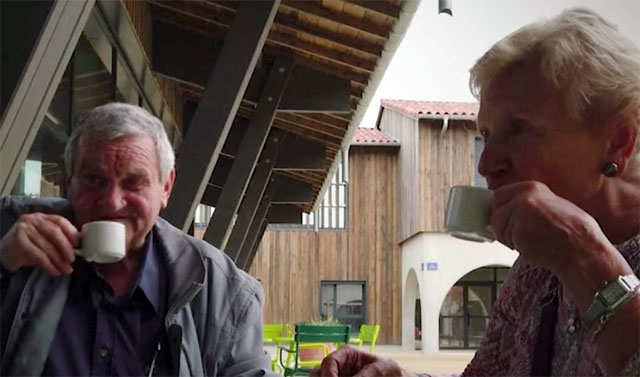As cities and villages look for ways to be more accessible and navigable for older adults and people living with dementia, experts heed caution against segregating spaces and urge focus on togetherness and inclusion.
Dementia-friendly communities, or age-friendly cities, are defined by the World Health Organization as places where healthcare, socializing and security are adapted to those in the community to enhance their quality of life.
As the world’s population skews older and the prevalence of dementia grows worldwide, more communities are looking for ways to be age- and dementia-friendly: Some of these include creating simple signage and navigational help, clearing and decluttering walking routes, and strategically placing landmarks and visual cues — like floor lines — to help people navigate. For example, urban planner Samantha Biglieri discovered through her research on dementia-inclusive design that placing clues around an area, like accessible signs and monuments, can assist in navigation for someone living with dementia as the markers provide reminders of how to get from one place to another.
Some communities have taken the needs of people living with dementia to the next level: A village in France where all residents are living with Alzheimer’s, per an experiment by the French government, is fully equipped with a grocery store, a hair salon, a coffee parlor and even music recitals. Any positive outcomes of the environment are measured in hopes it may slow down the progression of Alzheimer’s, while providing an autonomous lifestyle.
But Sienna Caspar, associate professor of faculty of health services at the University of Lethbridge, says that although it seems these communities would be a dream for caregivers and loved ones of those living with cognitive impairment, singling out a community just for those aging or living with dementia actually works against the overall goal of inclusion and acceptance.
“Related activities could help move communities worldwide from segregation to tolerance to true inclusion of all people as we age,” Caspar wrote in an article for The Conversation.
New initiatives are bringing people living with and without dementia together to fight the stigma, like college-age students living in senior housing to spend time with their elders in lieu of rent payments or all-inclusive choirs where all people are brought together.
“I believe that if more people without memory loss interact and create friendships with those who have it, stigma will decrease,” Caspar said. “Adopting attitudes of inclusion based on personal experiences could result in friendlier, more equitable communities.”
“People with dementia cannot help forgetting,” she continued. “It is up to us to remember that they are important members of society who deserve lives as connected and meaningful as our own.”



